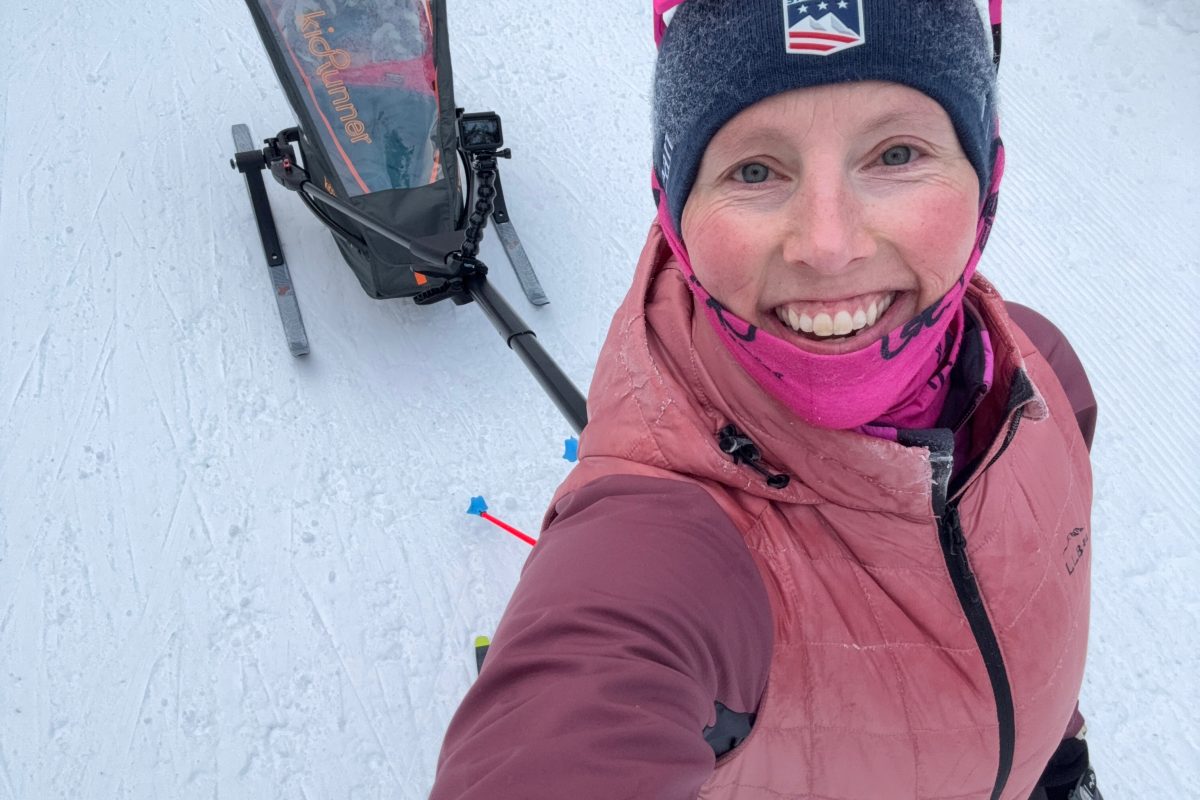While some lucky athletes have been training on snow for weeks, many are looking forward to strapping on their skis for the first time. For those of you who haven’t been able to seek out early-season snow, here’s some advice from the Craftsbury Green Racing Project for how to approach your first few sessions on skis. Although it’s easy to get caught up in the excitement of the first snowfall, it’s important to remember that correctly managing the transition from dryland to on-snow training will help you achieve your goals throughout the season.
Technique should be everyone’s primary focus as you make the transition to snow. At the Craftsbury Green Racing Project, we are constantly reminded that the more you perform the motions of skiing, the more ingrained they become – so it is essential to establish correct technique in your muscle memory instead of repeating bad habits. And because the feel of snow is different than the feel of pavement, even skiers who have done extensive technique work on rollerskis need to maintain that focus once they hit the white stuff.
A good first step is to identify technique flaws and necessary changes based on your skiing from last season. Then, work with a coach during initial on-snow sessions so that you can get feedback on whether you are accomplishing the intended changes. It’s especially helpful to do video review. Even if you feel like you’re making a drastic change, you may not be doing enough. Pepa Miloucheva, coach of the Craftsbury Nordic Ski Club, says that if you need to adjust the angles in your joints, “a 5% change feels like a 35% change.” Coaching and video review will keep you honest and on-track.
The goal technique work is to develop efficiency on skis. While it is in many ways more difficult to ski efficiently at a slow pace, the bulk of training sessions will be in level one, so it is essential to have good technique even here. To accomplish this, avoid incorporating intervals or too much speedplay into your first training days on snow. When our team was in West Yellowstone, we skied for three days before having our first interval workout. If you don’t have many opportunities to ski before the first races of the season, it’s important to do a serious review of those races – it is easy to fall back on bad habits when you’re tired, so the next sessions should focus on reestablishing good technique in your muscle memory.
To get the feel of the snow, it may be helpful to start out with some basic drills. One drill that Miloucheva suggests is to take off one of your skis, then use your free foot to push off and see how long you can glide. Think about your body position, and what will allow you to stay balanced the longest. Depending on what type of rollerskis you have been using, this drill may be more or less difficult than it was during the summer. Next, consider breaking your technique down into components, such as double-poling and no-pole skiing.
Early-season technique work is especially important for classic skiing. The feeling of kicking on wax and that of kicking against the ratchets of a classic rollerski are completely different. Correct body position and full transfer of weight are required for skiing on snow, and it’s essential to break any bad habits you might have developed on rollerskis.
To work on body position and weight transfer, spend some time skiing without poles. This accomplishes two things. First, poor body position will make you quite uncomfortable, so you’re likely to correct bad posture. Second, it encourages you to put your weight over the correct part of the ski and to transfer it completely, or else you will slip. When you add poles back into your training, try to maintain the body position and weight transfer you had without them.
Finally, once you have worked on your stated technique goals, begin adding speed back into your skiing. Be careful to maintain the same positive changes you have made even when you increase your tempo, as technique degenerates as you tire. The Craftsbury team incorporates two types of pickups, focusing on high tempo and high power separately, into easy distance skis. When you move on to intervals, you can combine the things you have been working on at slow tempo, high tempo, and high power.
These easy steps can help you hit the ground running with a solid technique basis for the rest of the season.

After walking on to the Dartmouth team, Chelsea Little improved steadily, earning carnival starts and her first EISA top-10 in 2007. The competitive atmosphere on the Dartmouth team taught her how to be an elite athlete, and greatly raised the level of her own skiing. While Chelsea is excited to put school behind her and train full-time, she appreciates the balance provided by the CGRP program. She is looking forward to getting to know Craftsbury’s wilderness and is already working to create a nature trail and an accompanying curriculum for student groups. Come winter, Chelsea hopes to settle into the national-level racing scene.



